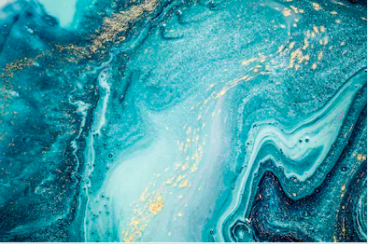
WATER WALKS - Through water honoring rituals we bring together Deep Ecology educators, environmental storytellers, and nature rights activists to facilitate a practice called ‘Walking to Know’ and ‘Letters of Earth’.
‘Water Walks’ is part of a growing movement that recognizes that an ecosystem has the right to exist, flourish, regenerate its vital cycles and be protected against pollution. This movement is striving for a paradigm shift in which nature is placed at the center and humans are connected to it in an interdependent way, rather than a dominant one. The project is taking place as a series, and began with the Gowanus Canal in Brooklyn, moving to the Great Salt Lake, Madrid Rio, and eventually Lake Michigan. The project brings together activist and writer Ash Sanders, Music Thanatologist Catharine DeLong, and artist Lana Neilson.
Photo by Lana Neilson
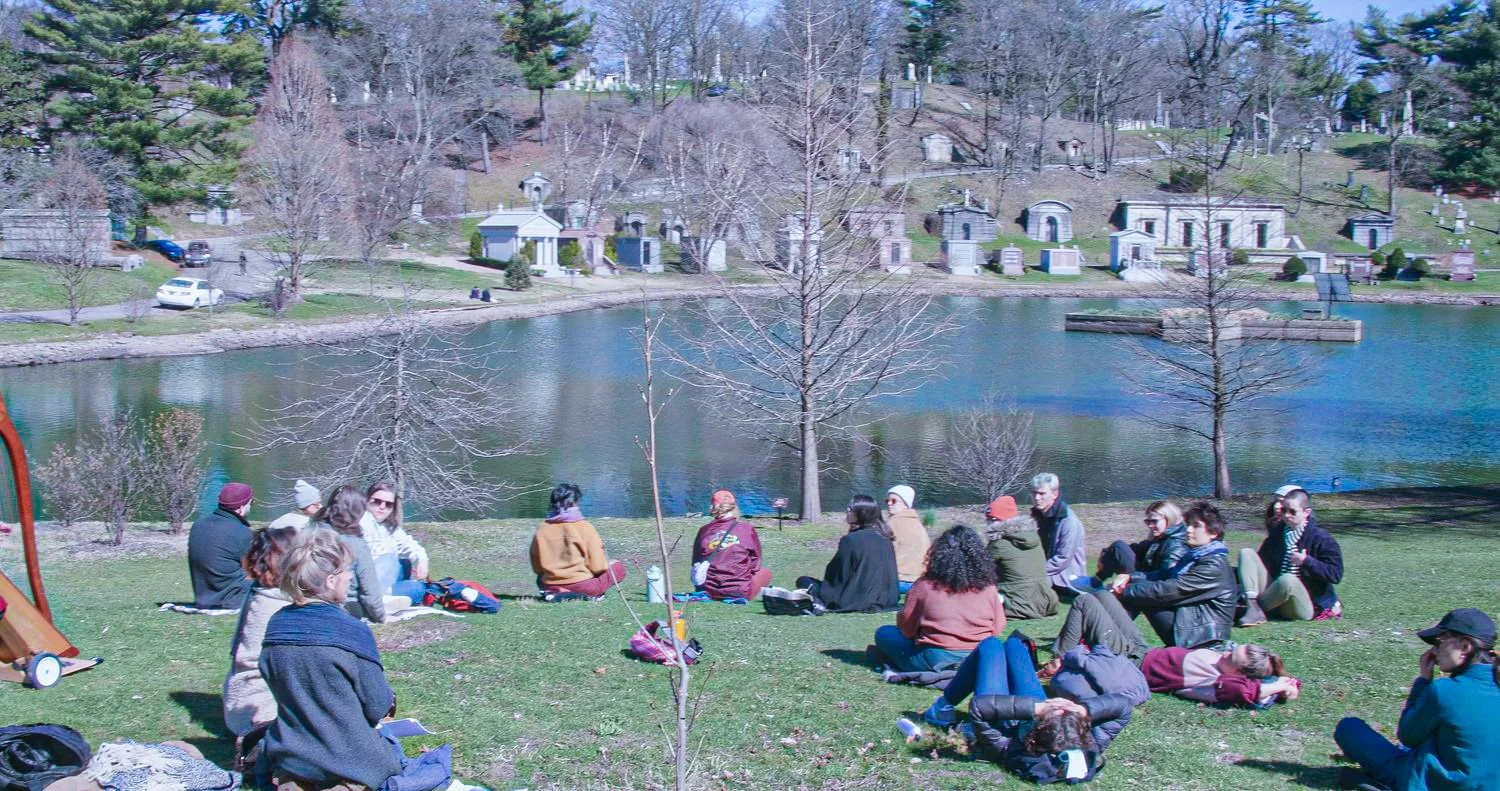


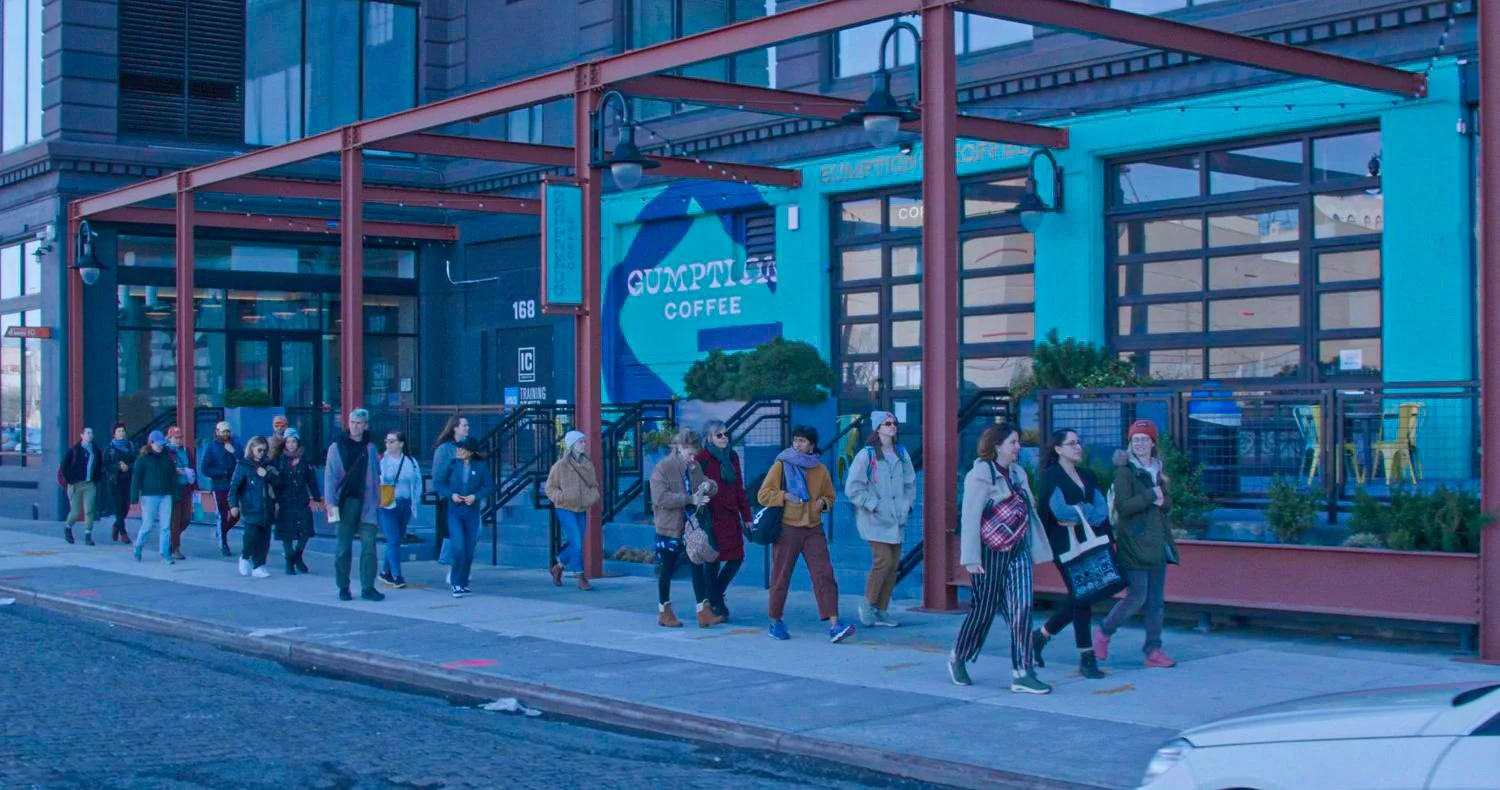
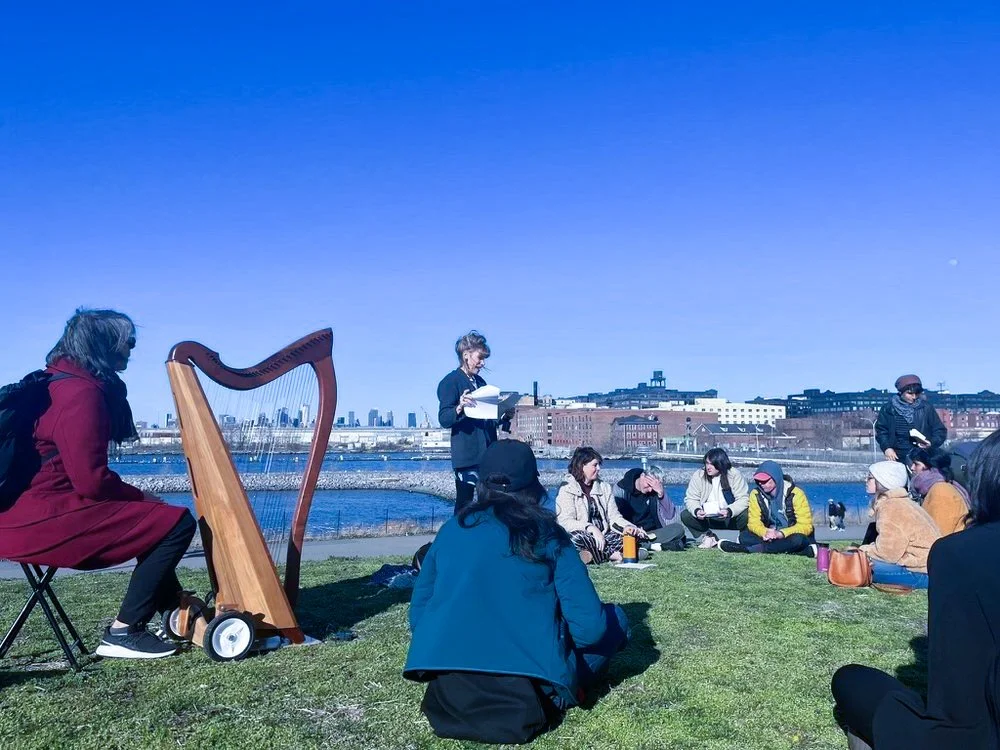
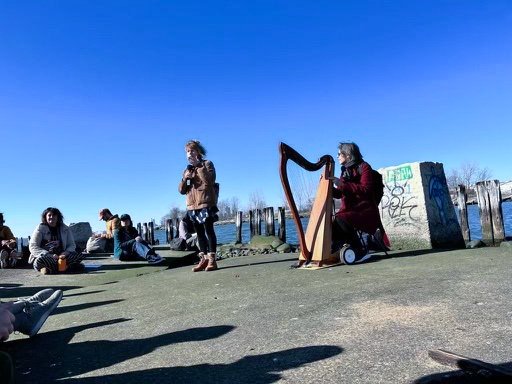
Arteries of the Earth.
We are in deep relationship with water. Even when this relationship has been forgotten it continues to sustain all that we are. Water is a source of life, a reminder of confluence, a source of power, and a holder of memories. But so many of the life-sustaining waters around us are polluted, dammed, or disappearing. Many of us feel deep separation or detached from the water that sustains us, existing in a state of alienation, while others who have a relationship with water grieve its endangerment. To heal our separateness, feel our connection, and take meaningful political action, we need to come into a more embodied and intimate relationship with the land and waters that are vital to the places we live.
Water Walks brings together environmental storytellers, nature rights activists, and educators to facilitate a practice called ‘Walking to Know’ while incorporating writing and contemplative practices that bring us into a more intimate relationship with the bodies of water that we wish to acknowledge and protect, creating an embodied relationship that inspires us to fight for the restoration and resilience of a variety of watersheds.
In collaboration with the Weaving Rivers project and Talking Wings we are embedded in Nature Rights advocacy that celebrate a tapestry of Rivers and their Guardians. Find here a story that is part of the greater tapestry of Confluence - A River Rights Movement.
River Healers - River Healers is the third ritual of the Urban River series by Kiyo Gutiérrez.
Four particular elements are invoked in this ritual:
There are three female healers to honor, the three matrilineal clans of the first people who lived along the shores of New York rivers, the Lenape.
The healers use their hair as a medium to communicate with the river: in many cosmologies hair carries magical properties and symbolizes the lines of force of the universe.
The tip of the textile is designed in the shape of the head of Rainbow Smelt, an important cold-water fish that has disappeared from New York rivers completely, due to warming temperatures.
New York rivers currents carry toxic flows of an era of industrial pollution and contemporary sewer overflows. Todays river water contains a high concentration of PCBs, chemicals that were used in the manufacture of electrical devices and discharged into New York city waters during a 30-year period. These toxic transits will show through the reaction of the dye.
Finally, the PH meter-hair pieces and the documentation of the intervention will be exhibited through an installation in a gallery, where visitors can appreciate the change in colour of the textile. The hair-pieces will hang from the ceiling of the gallery space, simulating the drop into the river, accompanied by picture(s) of the ritual and/or drone video documentation.
Weaving River Stories
Rivers are synonymous with life. They sustain the health of ecosystems and the communities that live along their banks. Each culture has a unique relationship with the rivers that weave together their histories. Around the world, however, rivers are threatened by an exploitative capitalist economy. It is time to shift our relationship with waterways and create a new governance system, a new way to honor and protect the rivers of the future.




